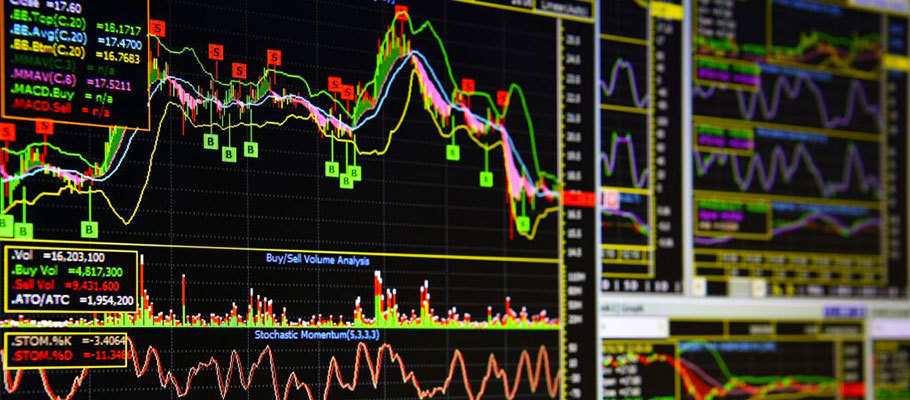Looking to invest in the Forex market but not sure where to start? Looking for some technical analysis data and analysis to help you make your investment decisions? Look no further! In this article, we’ll provide you with all the technical data and analysis you need to get started. So what are you waiting for? Start reading now!
What is Forex technical analysis data and what are its benefits
Forex technical analysis data is a tool that traders use to evaluate past price performance and make predictions about future price movements. This data can be used to help you make informed trading decisions, and can also be used in conjunction with other technical indicators or fundamental analysis.
There are many benefits to using Forex technical analysis data, including:
1. You can use it to identify trends.
2. You can use it to spot potential reversals.
3. You can use it to set entry and exit points.
4. You can use it to manage your risk.
5. It can help you plan your trading strategy.
How to read Forex technical analysis data
To read Forex technical analysis data, you’ll need to understand some basic concepts. Let’s take a look at a few key terms:
1. Support and resistance: These are price levels where the market has difficulty moving past. Support is the level at which buyers step in and push prices higher, while resistance is the level at which sellers step in and push prices lower.
2. Trend: This is the overall direction of the market. Trends can be Up (prices are moving higher), Down (prices are moving lower), or Sideways (prices are range-bound).
3. Momentum: This measures how fast prices are moving in a given direction. Momentum can be used to spot reversals and continuation patterns.
4. volatility: This measures how much the market is moving. A higher volatility means bigger price swings, which can present both opportunities and risks for traders.
The different types of Forex technical analysis data
There are many different types of Forex technical analysis data, but some of the most popular include:
1. Candlestick charts: These are one of the most popular types of charts among traders, as they provide a clear and concise way to visualize price action. Each candlestick represents a specific period and shows the open, high, low, and close prices for that period.
2. Bar charts: These are similar to candlestick charts, but each bar represents a specific period instead of candlesticks. Bar charts can provide more detailed information than candlestick charts.
3. Line charts: These are the simplest type of chart, and only show the closing price for each period. While line charts can be useful, they don’t provide as much information as other types of charts.
4. Technical indicators: These are mathematical formulas that are used to help traders identify trends, support and resistance levels, and potential reversals. Some popular technical indicators include moving averages, Bollinger Bands®, and MACD®.
How to use Forex technical analysis data in your trading strategy
Now that you know what Forex technical analysis data is and how to read it, you may be wondering how you can use it in your trading strategy.
Here are a few tips:
1. Use multiple time frames: It’s important to look at the big picture when you’re using Forex technical analysis data. This means looking at longer-term charts to identify trends and then using shorter-term charts to time your entries and exits.
2. Combine with other forms of analysis: Technical analysis is just one tool that you can use to make trading decisions. It’s often best to combine technical analysis with other forms of analysis, such as fundamental analysis or sentiment analysis.
3. Don’t rely on one indicator: There are hundreds of different technical indicators available, and it’s tempting to try to find the “perfect” indicator. However, no indicator is perfect, and it’s often best to use a combination of indicators.
4. Be patient: Don’t try to force trades just because you see a potential opportunity. Wait for confirmation before entering a trade, and don’t be afraid to walk away from a trade if it doesn’t fit your criteria.
Live examples of how to apply Forex technical analysis data in your trading strategy
Now let’s take a look at a few live examples of how you can use Forex technical analysis data in your trading strategy.
Example 1
Spotting a trend with moving averages
In this example, we’re using a candlestick chart to identify a potential trend. We’re looking at the EUR/USD pair on a daily time frame, and we’ve added two moving averages to the chart:
The red line is a 200-day moving average, and the blue line is a 50-day moving average. As you can see, the 50-day moving average is above the 200-day moving average, indicating that the market is in an uptrend.
To confirm that the trend is indeed up, we can wait for the price to pull back to the 50-day moving average and then start to move higher again. This is what’s known as a “moving average crossover” and it’s a common way to spot trends.
Example 2
Spotting a potential reversal with Bollinger Bands®
In this example, we’re using Bollinger Bands® to identify a potential reversal in the GBP/JPY pair. We’re looking at a 4-hour chart, and you can see that the price has been in a downtrend for several days.
The market then reaches the lower Bollinger Band®, which indicates that the selloff may be overdone. The market then reverses and starts to move higher, indicating that the downtrend may be over.
To confirm that the trend has indeed reversed, we can wait for the price to break above the upper Bollinger Band®. This would indicate that the buyers are in control and that the market is likely to continue moving higher.
Example 3
Spotting a potential reversal with MACD
In this example, we’re using MACD to identify a potential reversal in the EUR/USD pair. We’re looking at a daily chart, and you can see that the market has been in a downtrend for several weeks.
The market then reaches the lower Bollinger Band®, which indicates that the selloff may be overdone. The market then reverses and starts to move higher, indicating that the downtrend may be over.
To confirm that the trend has indeed reversed, we can wait for the MACD histogram to turn positive. This would indicate that the buyers are starting to take control of the market and that the downtrend is likely to reverse.
The bottom line
Forex technical analysis data can be a useful tool for traders, but it’s important to understand the basics before using it in your trading strategy. By combining technical analysis with other forms of analysis, such as fundamental analysis or sentiment analysis, you can get a more complete picture of the market and make more informed trading decisions.

